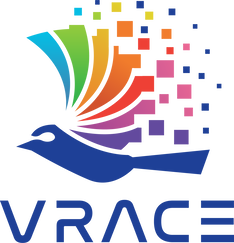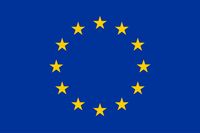Virtual Reality Audio for Cyber Environments (VRACE)
| Topic: | H2020-MSCA-ITN-2018: Innovative Training Network in the field of Virtual Acoustics | |
| Project leader: | Vasileios Chatziioannou, University of Music and Performing Arts Vienna (mdw) | |
| Local coordinators: | Wilfried Kausel, Vasileios Chatziioannou, Alex Hofmann, University of Music and Performing Arts Vienna (mdw) | |
| Other consortium partners: |
Technische Universität Wien (TUW), Vienna, AT; Gottfried Wilhelm Leibniz Universitaet Hannover (LUH), Hannover, DE; The Queen’s University of Belfast (QUB), Belfast, UK; Mueller-BBM GmbH (BBM), Munich, DE; Siemens Industry Soft-ware NV (SISW), Leuven, BE; Sennheiser Electronic GmbH & Co. KG (SENN), Hannover, DE;
Facebook Reality Labs / Oculus VR, LLC (OCULUS), Seattle, US; Centre d’etudes et d’expertise sur les risques l’environnement (CEREMA), Paris, FR; SYOS, Paris, FR; ARTIM, Gänserndorf, AT; IESTA, Vienna, AT; |
|
| Project start: | 01.03.2019 | |
| Project end: | 31.08.2023 | |
| Project website: | vrace-etn.eu/ | |
| Project data (ESR3) | Forum Acusticum 2023: https://github.com/titas2001/FA23_PIV_data |
The VRACE project, funded by the EU under the Marie Skodowska-Curie Horizon 2020 ITN programme, compiled a multidisciplinary network of 17 academic and industrial partners. It employed 15 Early Stage Researchers (ESRs) over a three-year period to perfect the audio component of virtual and augmented reality.
The project’s mission was to shift VR from being merely 'virtual' to feeling truly like 'reality'. It aimed to train a new generation of researchers capable of transforming today’s VR visions into tomorrow’s reality. VRACE strove to elevate VR audio to a new level of physical accuracy, enabling highly realistic and perceptually convincing sound environments. Researchers were prepared to simulate entire worlds for virtual testing and engineering through advancements in sound-source modelling, propagation, rendering, and psychoacoustics.
The project’s research combined:
- Modelling of sound sources
- Advanced techniques for sound propagation in complex interiors and outdoor scenes
- Psychoacoustic experiments to understand and optimize human spatial hearing
To accomplish this, ESRs underwent a rich training program:
- Core and advanced technical courses in acoustics, audio rendering, physical modelling, and psychoacoustics
- Hands-on individual research projects
- Transferable skills sessions on quality management, IPR, entrepreneurship, and open science
- Public tutorials and participation in key conferences (e.g., ICA 2019, ViennaTalk 2022)
By the end of the project, VRACE had:
Trained a cohort of expert researchers equipped to bridge innovative VR audio research with market-ready applications
Conducted pioneering research in physically realistic sound modelling, propagation, and perception in VR environments
Hosted a series of technical workshops across Europe (Aalto, ENSTA‑Paris, Hannover, Vienna), culminating in a final workshop in 2023
Presented research outcomes at major conferences, demonstrating successful completion and knowledge transfer
In conclusion, VRACE successfully delivered on its ambition: it trained a skilled new generation of VR‑audio researchers, developed techniques for realistic sound in virtual environments, and fostered close collaboration between academic and industrial partners. Its legacy endures through the researchers it trained and the methodologies it developed.
Publications of IWK members:
Corcuera Marruffo, Andrea; Meyer-Kahlen, Nils; and Lokki, Tapio. "Audibility of reduced spatial resolution in musical instrument directivity." Acta Acustica 9 (2025): 34.
Lluís, Francesc; Meyer‑Kahlen, Nils; Chatziioannou, Vasileios and Hofmann, Alex. “Direction Specific Ambisonics Source Separation with End‑to‑End Deep Learning.” Acta Acustica, vol. 7, 2023.
Lasickas, Titas; Caridi, Giuseppe Carlo Alp; Soldati, Alfredo, and Chatziioannou, Vasileios (2023)
"Investigating the Effect of Woodwind Instrument Tone Hole Size Using Particle Image Velocimetry,"
in 10th Convention of the European Acoustics Association, Forum Acusticum p. 4461-4468.
Corcuera Marruffo, Andrea; Chatziioannou, Vasileios and Ahrens, Jens. "Perceptual significance of tone-dependent directivity patterns of musical instruments." Journal of the Audio Engineering Society 71.5 (2023): 293-302.
Lluís, Francesc; Chatziioannou, Vasileios and Hofmann, Alex. “Points2Sound: From Mono to Binaural Audio Using 3D Point Cloud Scenes.” EURASIP Journal on Audio, Speech, and Music Processing, 2022.
Corcuera Marruffo, Andrea and Chatziioannou, Vasileios. “A Pilot Study on Tone‑Dependent Directivity Patterns of Musical Instruments.” Proceedings AES Int. Conf Audio for Virtual and Augmented Reality, 2022.
Corcuera Marruffo, Andrea; Thilakan, Jithin; Hofmann, Alex, Chatziioannou, Vasileios and Kob, Malte. “Analysing Musicians’ Acoustic Shadowing on the Directivity of the Trumpet.” Proc. DAGA 2022.
Lluís, Francesc; Chatziioannou, Vasileios and Hofmann, Alex. “Music Source Separation Conditioned on 3D Point Clouds.” arXiv, 3 Feb. 2021. arXiv:2102.02028.
Corcuera Marruffo, Andrea; Mayer, Alexander; Hofmann, Alex; Chatziioannou, Vasileios and Kausel, Wilfried. “Experimental Investigation of High‑Resolution Measurements of Directivity Patterns.” Proceedings of DAGA 2021, Vienna, DAGA, 2021.
Lluís, Francesc; Martínez‑Nuevo, Pablo; Bo Møller, Martin; and Shepstone, Sven. “Sound Field Reconstruction in Rooms: Inpainting Meets Super‑Resolution.” The Journal of the Acoustical Society of America, vol. 148, no. 2, 2020, pp. 649–659.

